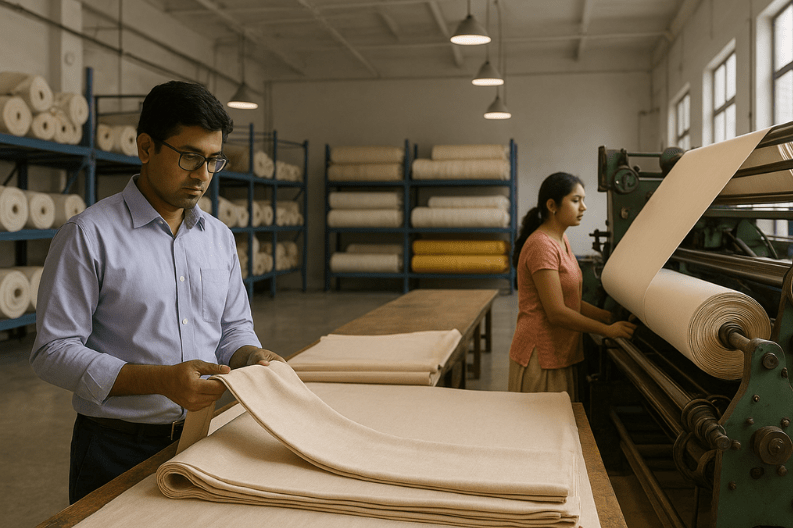Government updates PLI scheme, marking a major step toward strengthening India’s textile industry. On October 9, 2023, the Ministry of Textiles in New Delhi announced key reforms to simplify business, attract new investments, and boost the growth of man-made fibre (MMF) apparel, MMF fabrics, and technical textile products. These updates aim to help the textile sector overcome long-standing challenges and encourage more participation from industries across the country.
The Ministry added eight new HSN codes for MMF apparel and nine for MMF fabrics. HSN codes are unique identifiers used to classify products for trade and taxation. By expanding this list, the government ensures that more textile products qualify for incentives. This change will help manufacturers grow faster and diversify their operations.
In addition, officials allowed companies to create project units within existing businesses. This step gives both new and established firms greater flexibility to expand operations. Moreover, the Ministry believes that this change will make the scheme more inclusive and open to a wider range of manufacturers and exporters.
From August 1, 2023, the government also reduced the minimum investment requirement for new applicants. In the first part of the scheme, it dropped from ₹300 crore to ₹150 crore. In the second part, it decreased from ₹100 crore to ₹50 crore. As a result, small and mid-sized enterprises can now participate more easily and take advantage of the program.
Beginning in the financial year 2025–26, companies must show at least 10% higher earnings than the previous year to qualify for incentives. This new performance-based approach encourages healthy competition and ensures steady industry growth.
The Ministry has also extended the application deadline for the revised scheme to December 31, 2023. According to officials, this extension will allow more companies to apply and benefit from the reforms. “These revisions reduce financial thresholds and entry barriers, allowing faster participation,” the Ministry said in a statement.
India has set an ambitious target for the textile industry. The government aims to reach a $350 billion market size by 2030, which includes $100 billion in exports. This growth is especially vital for regions such as Punjab and Chandigarh, where textile manufacturing and cotton farming play an important economic role.
Union Textiles Minister Giriraj Singh highlighted sustainability as a top priority. He urged industries to use water and electricity efficiently and to embrace eco-friendly technologies. “The climate is changing, and we must protect nature together,” he said. His message stressed the importance of balancing industrial growth with environmental care.
To achieve this, the government is promoting renewable energy, efficient water use, and soil conservation. These measures will protect rain-fed cotton regions and support farmers’ livelihoods. India currently accounts for nearly 40% of the world’s cotton area, yet its productivity stands at only 450 kg per hectare, far below the global average of 2,000 kg. Therefore, the government plans to launch a Mission for Cotton Productivity to improve yields and increase farmers’ income.
The textile industry continues to be one of India’s most vital sectors, driving both employment and exports. The revised PLI scheme is expected to attract fresh investments, generate jobs, and further strengthen India’s position in the global textile market.
In conclusion, the government updates PLI scheme demonstrates India’s strong commitment to building a sustainable, innovative, and competitive textile industry. With its focus on investment, technology, and environmental care, the country is steadily moving toward becoming a global textile leader. 🌍



